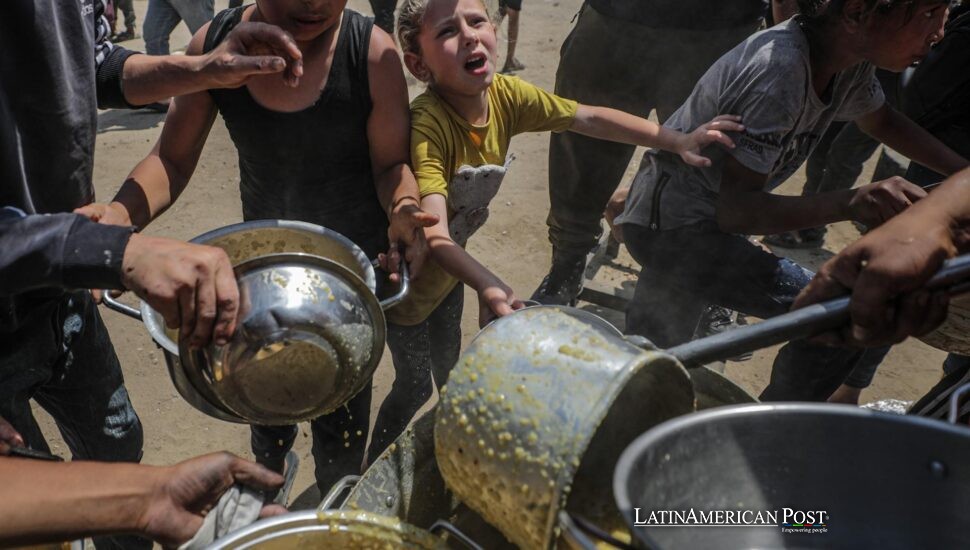Americas On the Edge: Climate and Violence Drive Millions from Home

Communities across the Americas face unprecedented upheaval as natural disasters and conflicts drive millions from their homes. The Internal Displacement Monitoring Centre’s (IDMC) Global Report on Internal Displacement (GRID) reveals alarming figures, prompting urgent calls for regional cooperation and resilient recovery plans.
Soaring Numbers of Displaced Populations
By the end of 2024, according to IDMC’s GRID, 83.4 million people worldwide were living displaced within their own countries—an 11% increase compared to 2023. This doubling over six years stems not only from intensifying conflicts but also from climate-fueled extremes. Some 73.5 million, representing nearly 90% of that total, left their homes because of violence. While Sudan saw the highest internal displacement figures globally, the Americas likewise contend with rising upheaval as crises cascade from Mexico down to Chile.
The report highlights that Brazil recorded its highest number of internally displaced persons at 1.1 million. Most of these cases involved catastrophic flooding in Rio Grande do Sul, where unusual rainfall inundated an area roughly the size of the United Kingdom. Meanwhile, other nations reported fewer flood displacements than in 2023, suggesting that weather patterns have not affected all areas equally. Still, the data underscores the unpredictable consequences of a changing climate throughout the region.
The grid points to another alarming statistic: displacements linked to conflict and violence in the Americas more than doubled to approximately 1.5 million. Over 60% of those movements originated in Haiti, where gang violence continues to fuel an exodus from the capital, Port-au-Prince. Meanwhile, Colombia—consistently a hotspot—recorded nearly 388,000 new displacements, a pattern in line with previous years. As of December 2024, about 9.6 million people remain internally displaced across the hemisphere, 87% of them affected by conflicts in either Colombia or Haiti. Some of this jump—up from 6.3 million the year before—derives from improved data collection, especially by Colombian authorities who revised earlier figures to reflect ongoing vulnerabilities among those forcibly uprooted.
Hurricanes Unleash Historic Devastation
One particularly troubling insight from the IDMC’s findings concerns the devastating storms ravaging vast swaths of the Americas. The 2024 hurricane season marked the ninth consecutive year with above-average activity, triggering more than 80% of the Americas’ disaster displacements. Hurricane Beryl stands out for its record-breaking status as the earliest category-five storm documented in the Atlantic. It caused damage in the Caribbean. Following that, it moved north. The storm impacted the Yucatán peninsula in Mexico. Texas had 1.6 million displacements because of it. Movements contained evacuation orders. In other situations, families left their homes because of rising water. They hoped to avoid problems similar to those experienced by people caught in rapid floods from previous months.
The onslaught continued with Hurricane Helene, which prompted well over two million displacements in the southeastern United States, particularly Florida, South Carolina, and North Carolina. Soon after, authorities warned about the approaching hurricane Milton, a category five storm that led Florida officials to mandate 5.9 million evacuations. Such large-scale dislocations taxed local resources, with some counties reporting their populations surged by up to 40%. Milton diminished in force when it made landfall, yet it struck areas Helene had recently damaged, compounding the misery for displaced residents attempting to rebuild. Preliminary estimates suggest thousands of homes were destroyed or severely damaged, and gathering complete data proved difficult.
Though often overshadowed, several countries outside the continental U.S. also suffered harsh hurricane seasons. Cuba weathered two significant storms, Oscar and Rafael, in the autumn, each affecting opposite ends of the island and triggering 480,000 disaster displacements. Along with floods and landslides, multiple earthquakes also disturbed infrastructure, affecting power grids and water systems—conditions ripe for disease outbreaks. These overlapping catastrophes demonstrate how a region may endure layered emergencies with dire public health and safety implications.
Growing Tensions and Chronic Instability
Compounding climate-driven turmoil, violence in parts of the Americas continues to force citizens from their homes. In Haiti, nearly 889,000 people were newly displaced by criminal violence in 2024 alone, tripling the figures from 2023. The expanding influence of local gangs has elevated insecurity in Port-au-Prince, pushing some to seek refuge in rural provinces and adding pressure to communities already grappling with limited resources. Infrastructure failures, including sporadic airport closures and collapsed displacement sites, hindered effective emergency and humanitarian responses.
Meanwhile, Colombia reported fewer armed clashes following ceasefires between the government and several non-state groups. Even so, almost 388,000 people had no choice but to leave their homes because of ongoing security threats and extortion. Indigenous and Afro-Colombian communities, primarily in Cauca, Chocó, and Nariño, remain particularly at risk. The persistently high count of internally displaced persons—now at 7.3 million—also reflects revised tallies that paint a more realistic picture of ongoing hardships. Government monitoring every six months helps identify gaps in support, aiming to trace whether or not displaced communities can safely return home or integrate elsewhere.
Another nation with little prior data, Ecuador, revealed for the first time that conflict and violence triggered around 101,000 displacements in 2024. Authorities in Quito have been fighting the spread of criminal networks that operate near the capital and along the coast, prompting President Guillermo Lasso to proclaim the existence of an armed conflict and to deploy the military. Almost half of the surveyed families fled en masse, exposing the depth of community-wide danger in provinces like Esmeraldas, Manabí, and Guayas.
Numerous governments now confront the urgent need to address people’s immediate suffering while implementing longer-term risk reduction. Some states have begun drafting relevant legislation. Brazil, for example, is refining its National Protection and Civil Defense Policy, introduced in 2012, to align with more recent developments. Following catastrophic floods, Rio Grande do Sul authorities began specific reconstruction and climate resilience programs. Data omissions persist, complicating the situation. It is difficult to judge the eventual effect of these policies and understand how many people are still displaced because of data issues. The IDMC’s GRID report displays a need for more organized action in many areas. Storm alerts, pre-emptive evacuations, well-structured disaster plans, and robust conflict resolution mechanisms can jointly mitigate displacement.
Meanwhile, robust data-collection systems remain critical in pinpointing the magnitude of this crisis. Better information leads to targeted help—establishing long-term shelters for violence survivors or engineering barriers against floodwaters. Environmental disturbances increase. Criminal organizations expand their areas of operation. Local authorities must stay watchful. National authorities also must remain vigilant. They must share resources. They must address the needs of populations displaced by force. These populations require primary attention.
Also Read: Bolivian Leader Emerges from the Heart of the Cocalero Movement with Presidential Dream
All in all, the narrative across the Americas is one of increasing pressure on vulnerable populations, whether they are rural families swept away by floods, urban dwellers in the path of a hurricane, or impoverished neighborhoods gripped by armed gangs. The rising tide of internal displacement demands swift, comprehensive strategies that combine resilience-building, conflict de-escalation, and critical infrastructure upgrades. Only by confronting both climate-related hazards and entrenched violence can nations hope to reverse these staggering trends and give millions of displaced people the opportunity to return home or rebuild their lives with dignity.





